In the era of multitasking in which we live, the silence (physical and mental) becomes more necessary than ever. Eliminating all that noise that constantly captures our attention is a therapy that is practiced in many countries ; in fact, the Nordics have long been placing "silence" as the central piece of their tourist offer. But there is nothing that the Finns recommend that we cannot do here on our land.
Huesca, and more specifically the Pyrenees Tena Valley , is the national example that in some places you can empty your mind in a matter of minutes (the fact that there is little mobile coverage here also helps, of course).

Route of the lakes.
JOURNEY TO THE SILENCE OF THE HIGH MOUNTAIN
The Pyrenees have always acted as an escape valve from the urban noise, especially when it involves going into groves, climbing peaks and walking around glacial lakes.
The head of the Tena Valley fits within the Ordesa-Viñamala UNESCO Biosphere Reserve , which boasts of having one of the best representations of the diverse mountain ecosystems of the Pyrenees. There are endless possibilities to get to know them without leaving the valley, including following, for example, one of the routes of the lakes (glacial lakes) from the Baths of Panticosa.
The options are many and adapted to all physical forms, from simple walks through the Baños and Asnos lakes , even the most demanding crossings that link the Blue Ibons , those of Pecico and those of Bass Rumbler , all located above 2,000 meters of altitude. And for summit collectors, from here you can ascend to the emblematic Balaitus (3,144 meters), black garmo (3,051 meters) or Pena Telera (2,764 meters) among others.
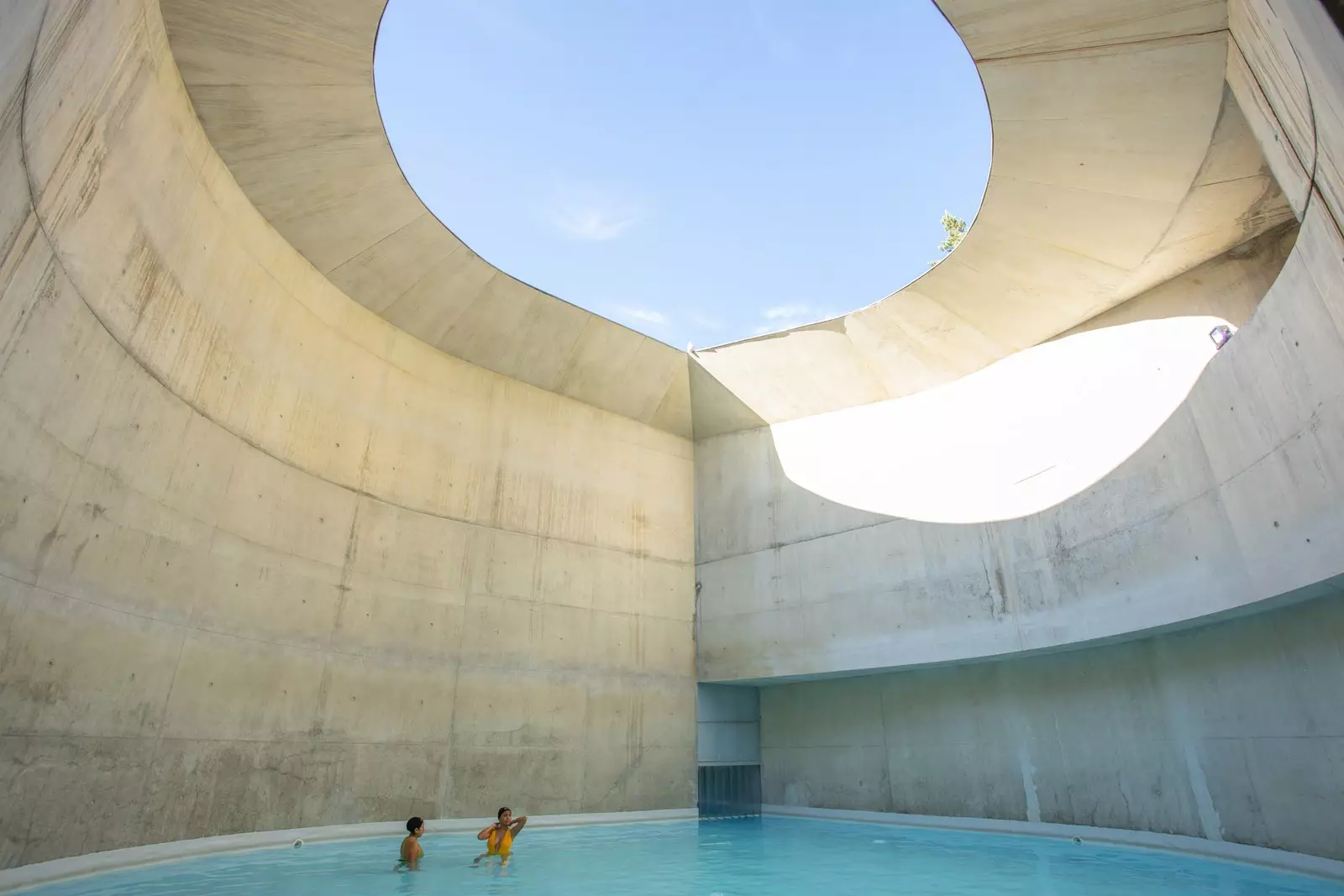
Panticosa baths.
ITS HISTORICAL BATHS
Despite its remote location at 1,636 meters above sea level, the thermal baths of Panticosa were already being exploited in the time of Tiberius due to the special characteristics of their mineral-medicinal waters. in roman times , those who came here to calm their ailments threw coins into the fountain so that the nymphs would be favorable to their healing (coins that, by the way, were found in the excavations of the place).
The use of these waters continued throughout history, and in 1870, that of Panticosa was already the most prestigious of the Spanish spas . At the beginning of the 21st century, after the controversial demolition of historic buildings and the construction of new hotels by the hand of the Pritzker prize, rafael moneo , the complex acquired the image we know today.
But aside from the wrapping that treasures them, the essence of the place continues to be those alkaline waters , fluorinated, sulfur, bicarbonated, sodium and oligometallic that emerge from the earth at 53º C. They are the soul of the spa and continue to relieve bone, skin, rheumatic ailments and what matters most to us: the stress charts.
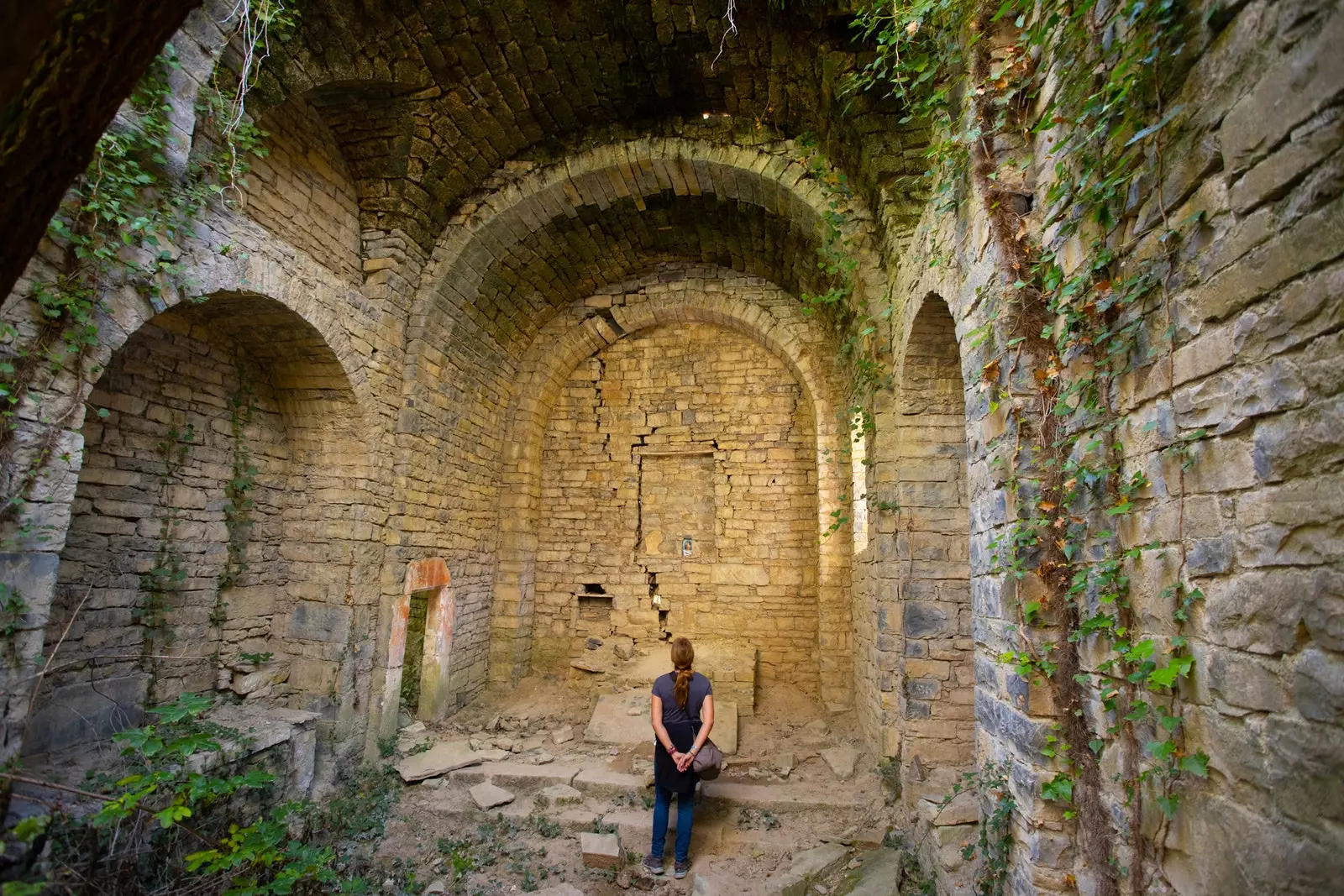
Ruins in Bergusa.
UNINHABITED TOWNS
There is no exact figure for how many towns in Huesca were left uninhabited after the 1960s for various reasons, including the construction of swamps, reforestation policies or the gradual lack of livelihoods. But, the closest number is 260.
In the Tena Valley there are several of those population centers that after the departure of its inhabitants succumbed to the inclement weather and to the unstoppable advance of a vegetation that has taken over the interiors of houses, streets and schools . Silence in them is the law.
The most famous is certainly Ainielle , protagonist of the novel by Julio Llamazares The yellow rain, which since its publication in 1988 has not stopped attracting the curious and nostalgic. Reaching it is not an easy task, since to reach it it is necessary to walk almost seven hours (round trip) from Oliván. More isolation, impossible.
By the way, on the way he comes across another ruined village: bergusa . Other villages in the valley that until recently had no inhabitants have been restored to house tourist accommodation, second homes or businesses run by neo-rurals. Among them are Susin, Lanuza —which hosts the massive Pyrenees South festival— Búbal, Escuer Alto either there among others.
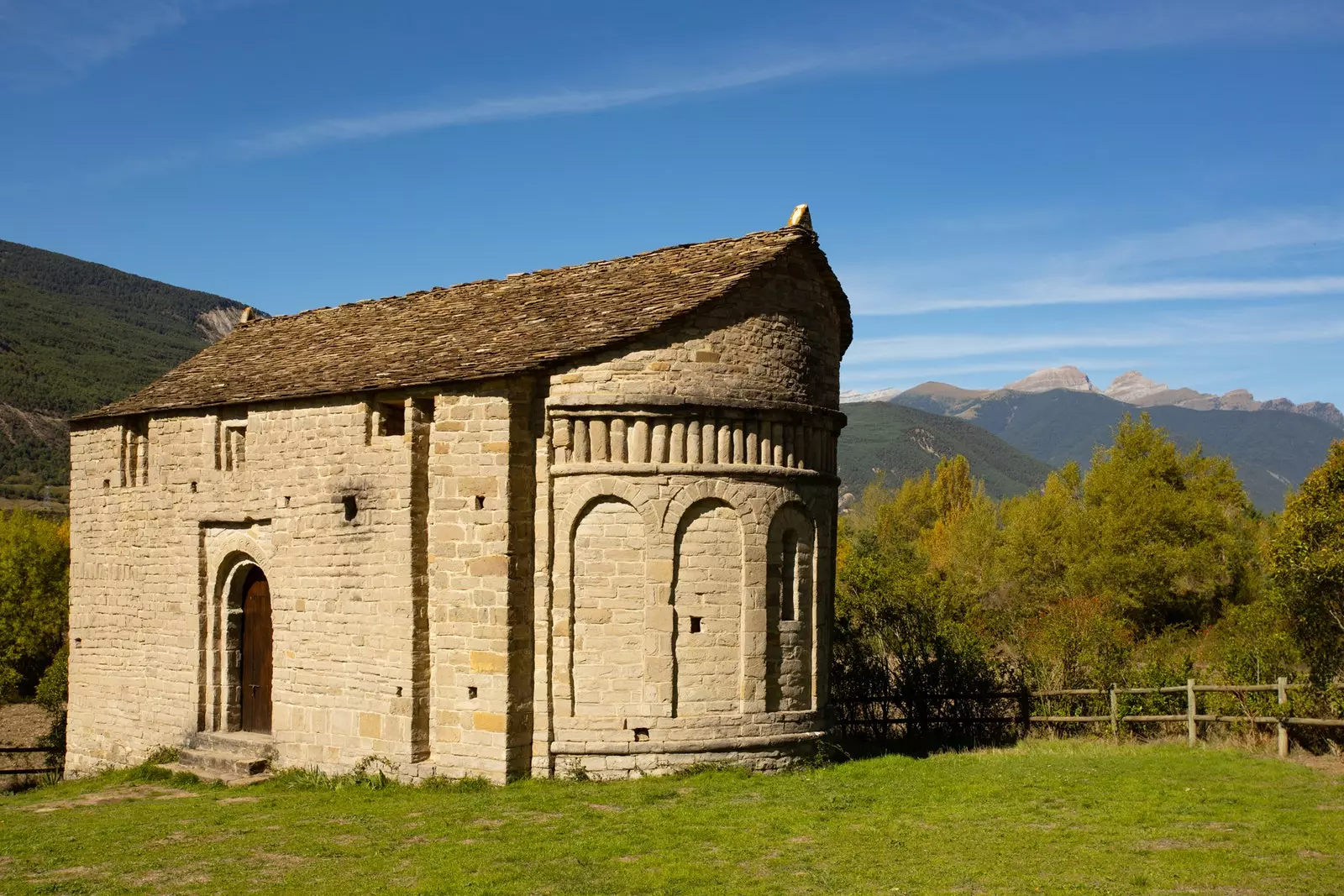
Hermitage of San Juan de Busa.
ROMANESQUE CHURCHES IN THE TENA VALLEY
50 years ago, a group of young enthusiasts from the Tena Valley decided to recover a whole group of religious and civil heritage buildings that were in a very sorry state of conservation. They located hermitages, huts, drinking troughs, mills, fountains and other ethnographic elements called to disappear and with their own hands —and the donations of anonymous people— they began to work to keep what was the cultural legacy of their ancestors.
The Friends of Serrablo began by restoring the Hermitage of San Juan de Busa and after that came more, many more. Today his altruistic effort can be seen reflected in 25 fully restored churches and hermitages that provide unique spaces of silence. They are San Martín de Oliván, San Bartolomé de Gavín, Santa Eulalia de Susín and many others that can be discovered by following the Route of the Churches of Serrablo.
Among the fruits obtained through sweat and tears by this group of volunteers is also the magnificent Castle of Larres , which belonged to a noble family of the Crown of Aragon; and the Serrablo Museum of Popular Arts , which brings together a large collection of objects of great ethnographic value.
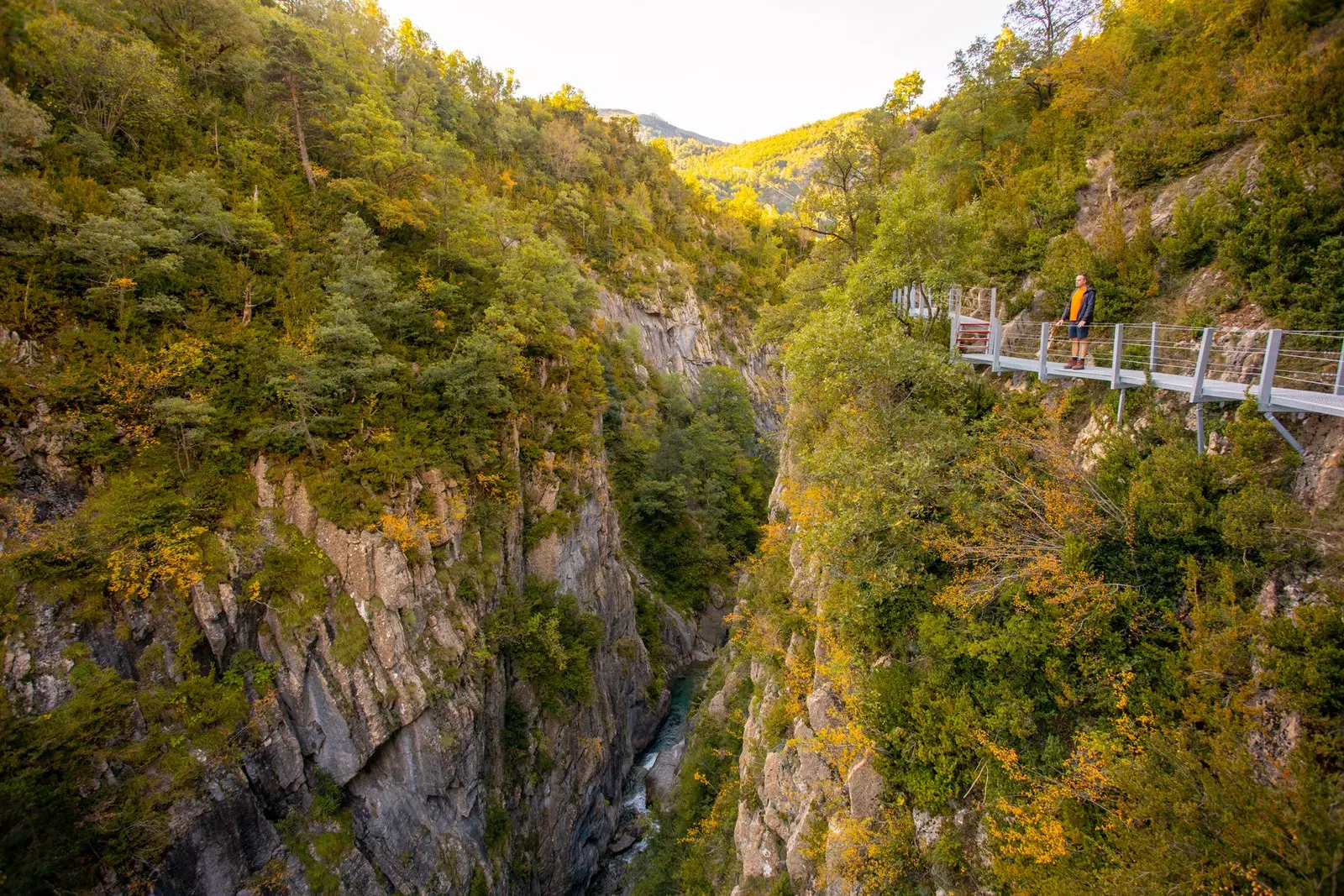
Panticosa Footbridge.
THE SILENCE OF ITS HUMANIZED LANDSCAPES
Inside the umbrella Ordesa-Viñamala UNESCO Biosphere Reserve , there are some territories —such as the one that surrounds the town of Panticosa or the one that occupies the left bank of the Tena River— that are known as Transition Zones . These are places where sustainable economic activities aimed at favoring the socioeconomic development of the local population are promoted. Which helps to avoid what we have already seen in the past: the depopulation of rural areas.
In these places certain tourist activities are developed that can help us to disconnect and get in touch with nature in a more playful way (and more accessible, for example, for children). Some clues: in the Faunistic Park of Lacuniacha, located in a coniferous forest at an altitude of about 1,300 metres, a good part of the fauna that inhabits or inhabited the Pyrenees lives in semi-captivity.
Another mountaineering activity accessible to all audiences are the newly opened Panticosa Footbridges that allow you to walk over the abyss without danger and that (we certify) help you not to think about anything else. From the same town it is also possible to follow the very photogenic Route of the Viewpoints.
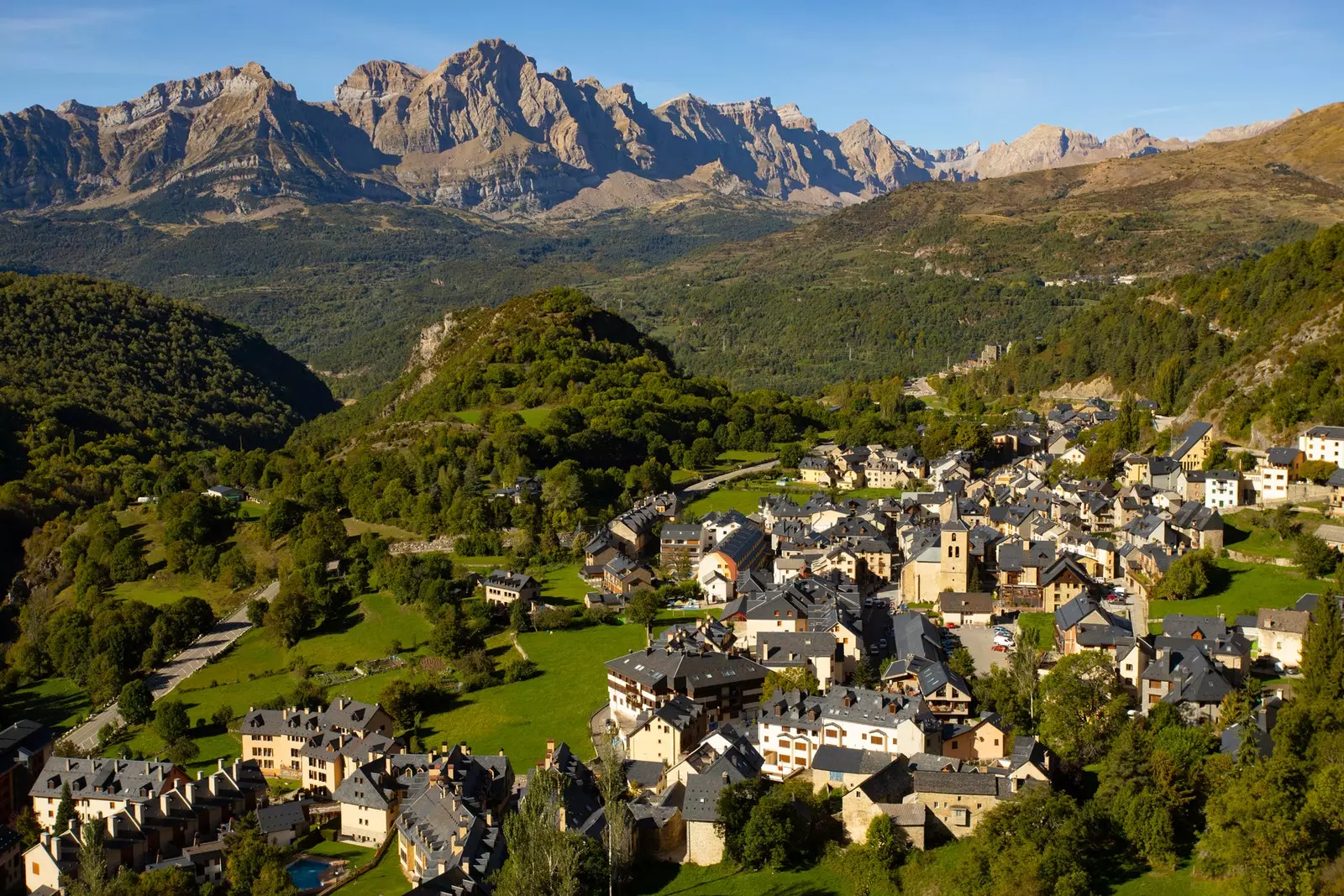
Route of the Viewpoints.
See also:
- Autumn in the Pyrenees of Huesca (and how to hallucinate when arriving at Ordesa and Monte Perdido)
- Small gastronomic shopping guide in the city of Huesca
- The Lecina Holm oak: the tree that is well worth a trip
